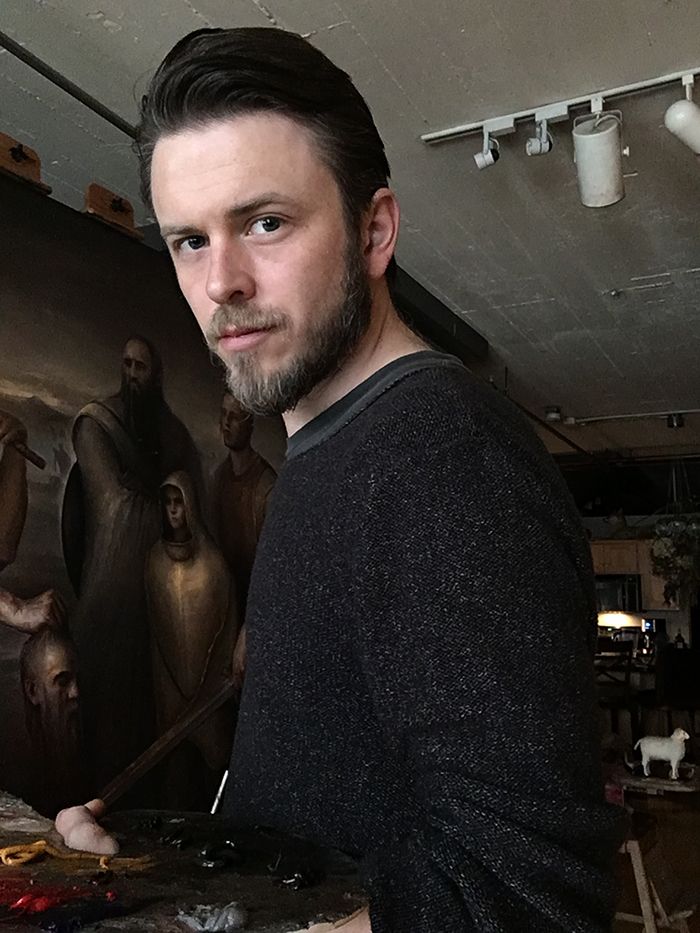“You could try to get a job making Romance Novel covers,” my Art professor told me during our midterm critique. I sat in the middle of the class in front of my painting, “Traveling Lovers.” In it, two figures looked out to an idyllic sunset and one had a walking stick. Their clothes were similar to those I knew from a fantasy video game because I wanted them to feel timeless. I was shamelessly sincere. I had not read a romance novel, but I thought that could be a good job!
I could sense some students’ growing embarrassment for me. Some giggled at the perceived slight from the teacher. It is a common story for painters to be pressured away from sentimentality in Art School. But I continued making romantic paintings on my own.
Later, I found the paintings of Odd Nerdrum, Jan-Ove Tuv and Helene Knoop. The Kitsch idea they promoted encouraged free expression. They had no moralistic attitude against sentimentality. In addition, unlike Art School, their advice helped me improve my paintings!
When I visit a museum, I spend the most time in front of the paintings with the strongest sentiment. The core issue here for painters is that it takes a lot of skill to create a human expression that feels convincing. Even if the smallest facial muscle is off, an emotion feels faked. This is the lower kitsch that makes Art students giggle uncomfortably. Still many of us need years to work through this stage before we can reach anything that grips an audience – anything approaching High-Kitsch.
